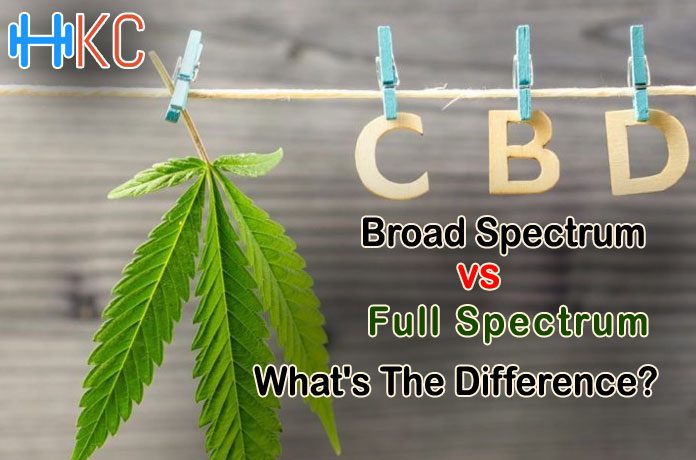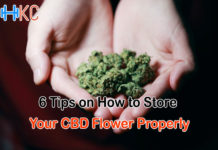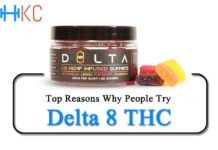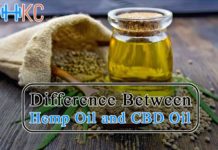CBD Broad Spectrum vs Full Spectrum: What’s The Difference?
Both full-spectrum and broad-spectrum CBD offer numerous potential benefits. The key difference is found in the composition. This means the experience with each will be slightly different. The lack of a specific definition has resulted in a lot of confusion. Despite these terms originating within the CBD industry, they are often misunderstood. To begin, you need to understand the following terms. Broad-spectrum vs full-spectrum.
The cannabis plant contains different compounds. These are called cannabinoids. There are more than 100 different cannabinoids including CBD and THC. Many consider the year 1995 to be the beginning. This is because that was when an important discovery was made by researchers. The reaction between cannabinoids and the human (ECS) endocannabinoid system resulted in benefits for the human body. The discovery that the body reacted differently to each cannabinoid occurred later.
The Cannabinoid Spectrum
A good example is THC provides psychoactive effects often referred to as a high. This does not occur with CBD. This effect can actually be counteracted by CBD. Due to the different effects of every cannabinoid, the complete collection is now called the cannabinoid spectrum. One of the most important aspects of this spectrum is the determination as to whether a CBD product is classified as broad-spectrum, full-spectrum or a CBD isolate.
In order for a CBD product to be created, there must be an extraction of the cannabinoid content from the plant. One of the most popular methods is referred to as CO2 extraction. This involves the extraction of other compounds located in the plant as well, such as flavonoids and terpenes. The differences in the cannabinoid profile and composition are determined according to the extraction classification and the cannabis strain.
The classification for hemp is Cannabis Sativa. In comparison to the Indica strain, the content of THC is little to nonexistent. The content ratio of Pennywise is 1:1 THC to CBD. The type of cannabis chosen for the extraction process is determined by what is required for the final product. After completing the extraction process, the extract is refined by the manufacturer to ensure only specific parts of the plant and cannabinoids remain.
What remains in the refined extract is the difference between broad-spectrum and full-spectrum CBD. The best product for your needs is determined by the reason you are using the product. According to science, the purest form of the compound is called an isolate. This is made possible through an extraction separating the desired compound. This means the compound must be isolated from the other compounds and its environment. Both broad-spectrum and full-spectrum CBD contains a lot of different cannabinoids.
The best way to understand the differences between the two is to understand each one of them individually.
Broad-Spectrum CBD
There is no THC contained in broad-spectrum extracts, with two different production methods available. The first method removes all of the THC from the full-spectrum. The second method combines isolated flavonoids, terpenes and cannabinoids with the CBD isolate. This imitates the full-spectrum while eliminating the THC. The only way you can really understand a CBD product is to find out which method was used for the creation of the broad-spectrum formula.
If different isolates were combined to manufacture the product, you need to see the lab results. This will show you which compounds were used for manufacturing the product. This is a good way to determine if the product is right for your needs and the effect you want to achieve.
Full-Spectrum CBD
Full-spectrum is also called whole-plant and full-plant extract. The type of extraction used includes the complete plant. This means in order for full-spectrum oil to be processed, the stalk, leaf and seeds need to be processed. The finished product contains all of the cannabinoids natural to the plant. This includes cannabinoids, flavonoids, terpenes and fatty acids. The molecular content and visual appearance of the oil are affected by the type of extraction used to make the product.
One of the main benefits of full-spectrum hemp is the entourage effect provided. This is the concept that there are hundreds of compounds contained within the plant that work together synergistically. This increases the medicinal benefits offered by the product. In most cases, hemp plants are used to produce full-spectrum CBD due to federal laws. The definition of hemp is cannabis containing THC content below 0.3 percent. This ensures the product is legal.
If the THC content exceeds 0.3 percent, the product is illegal. The exception is states where cannabis has been legalized for adult use. Full-spectrum products in these states can legally exceed 0.3 percent of THC when sold in a dispensary. If the product is not purchased through a licensed dispensary or online, full-spectrum products will be derived from hemp. Legal full-spectrum products only contain trace amounts of THC or below 3.0 percent.
When full-spectrum CBD is derived from cannabis with a high content of THC, it is called full-spectrum cannabis oil as opposed to full-spectrum CBD oil. These products are used throughout the recreational and medicinal cannabis market. Due to the high THC levels, you will pay more for these products than full-spectrum oils derived from hemp.














